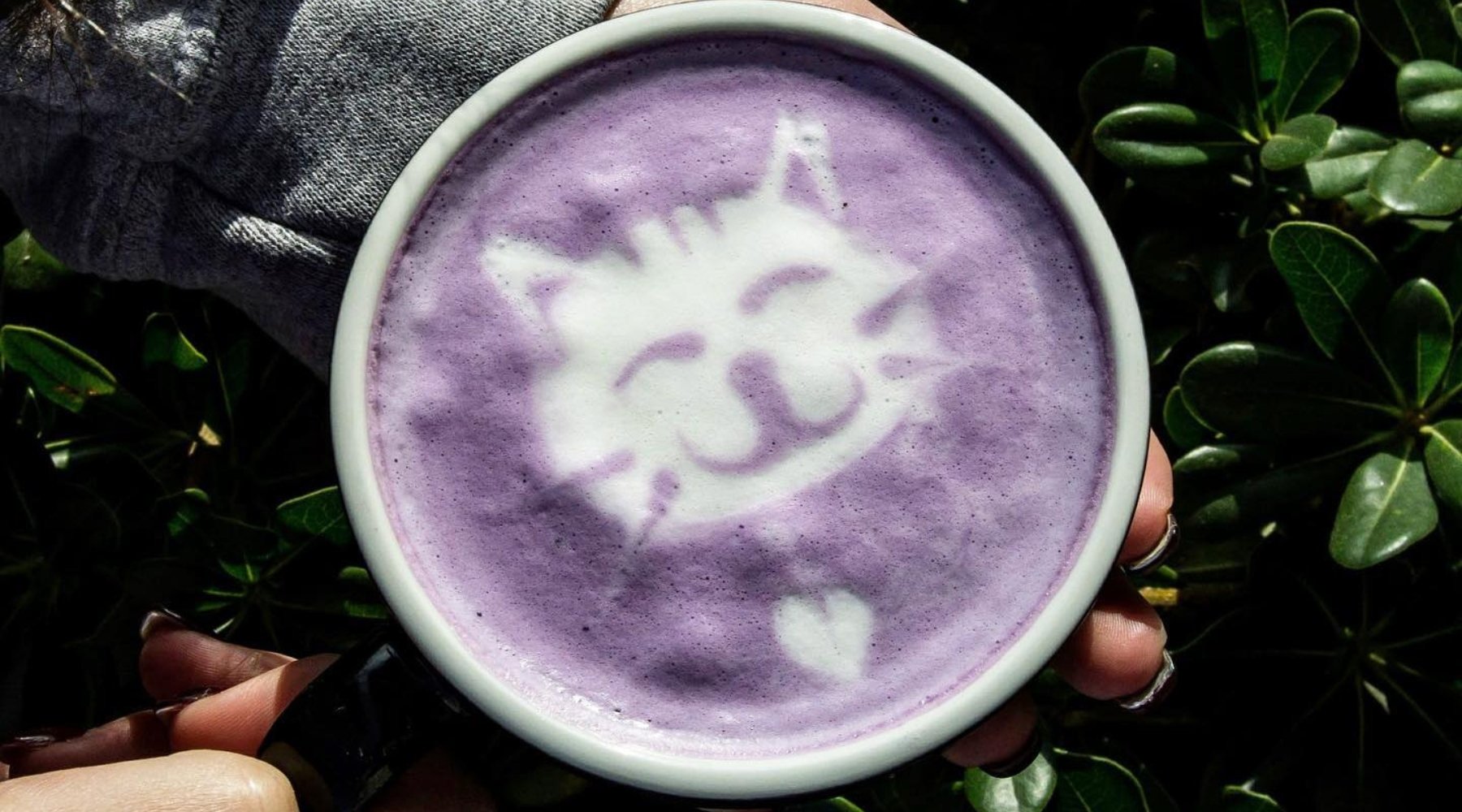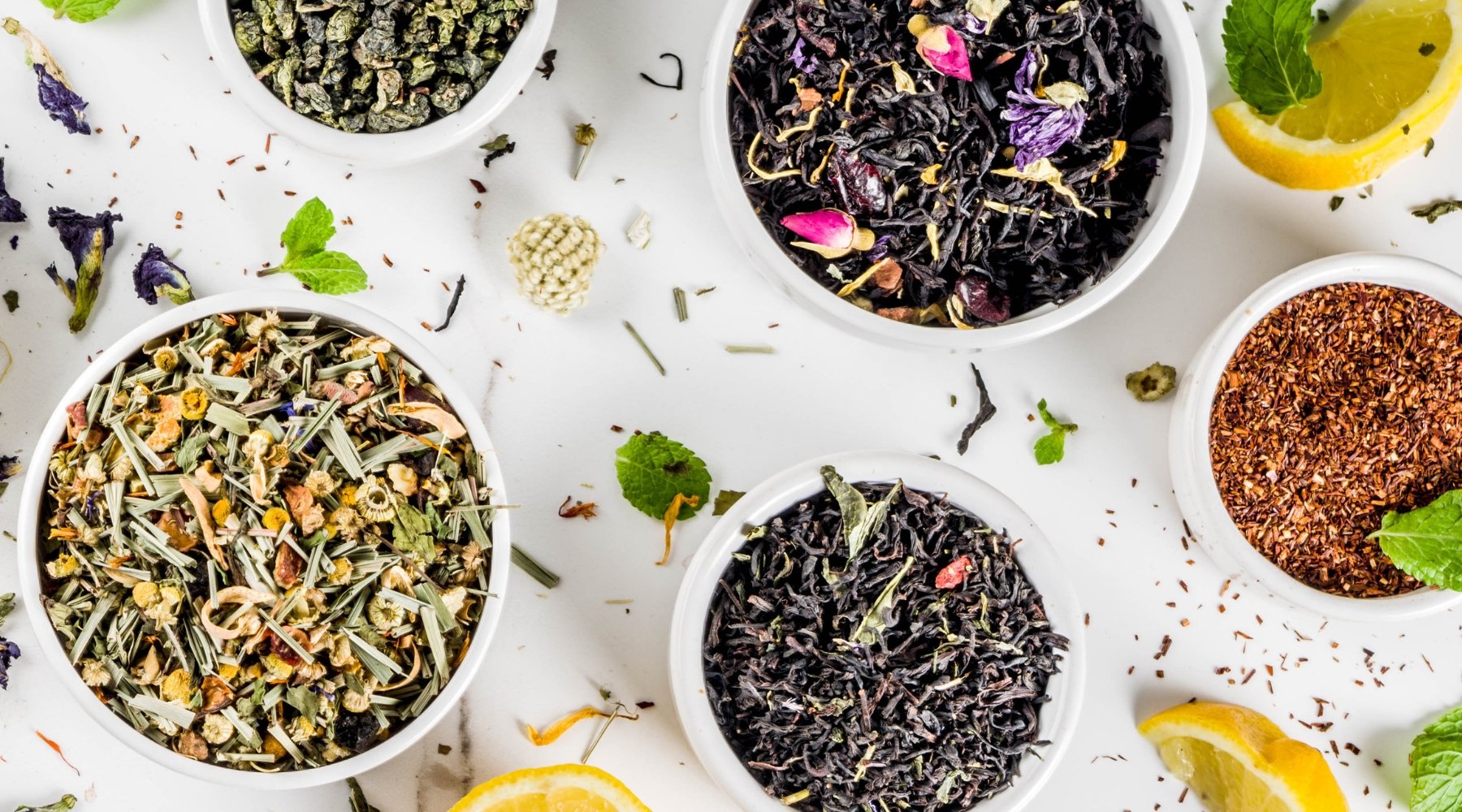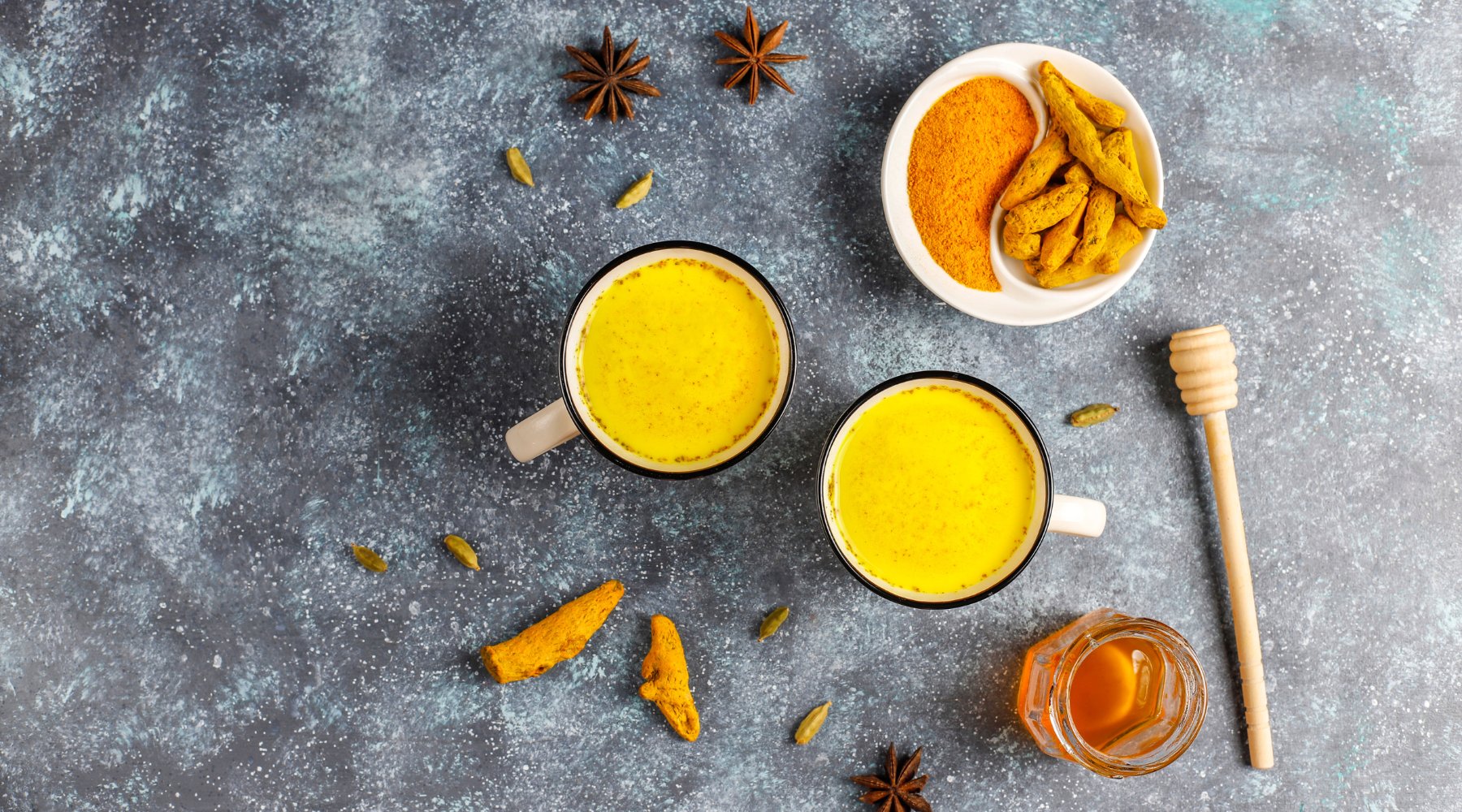
Everything about Taro Latte or Taro Bubble Tea
Taro latte or taro bubble tea. A captivating purple-hued beverage. An intriguing and increasingly popular powder tea, with a loyal following for its distinct taste and visual appeal.
If you're curious about this unique and flavourful latte, you've come to the right place. In this article, we'll get into the world of taro latte; we'll uncover its origin, ingredients, flavour profile, health benefits and everything about taro bubble tea.
Get ready to indulge in the velvety goodness and enchanting flavours of taro-infused drinks.
The Origin of Taro
Taro, the star ingredient behind the delectable taro latte, has a rich history dating back thousands of years. Believed to have originated in Southeast Asia or the Indian subcontinent, this starchy root vegetable has been an integral part of traditional cuisines across various cultures.

The cultivation of taro dates back to ancient times, where it was a staple food for many indigenous communities.
Over time, it spread to different parts of the world through trade and exploration. It became a beloved ingredient in culinary traditions from Hawaii to West Africa, and from Polynesia to the Caribbean.
Taro belongs to the Araceae family and has the scientific name "Colocasia esculenta." It thrives in tropical and subtropical regions, where the warm climate and ample water supply create ideal conditions for its growth. The plant features heart-shaped leaves and an underground corm, which is the part commonly used in cooking.
One of the remarkable qualities of taro is its versatility. It can be prepared in various ways based on the desired dish, including:
- Boiling
- Steaming
- Frying
- Baking
Taro's mild and slightly nutty flavour, along with its unique purple or white flesh, adds a distinctive character to both savoury and sweet creations.
In addition to its culinary uses, taro holds cultural and symbolic significance in many societies. It is often associated with abundance, prosperity, and even spiritual beliefs.
Festivals and rituals centred around taro cultivation and consumption are observed in different parts of the world, showcasing its deep-rooted cultural importance.
Today, taro has gained international popularity, transcending borders and delighting taste buds across continents. Its inclusion in beverages like taro latte highlights its adaptability and ability to bring a touch of exotic flavour to modern creations.
The Origin of Taro Latte in Taiwan
Taro latte has a fascinating origin story rooted in the vibrant tea culture of Taiwan. In the 1990s, Taiwanese tea shops and cafes began experimenting with different flavours and ingredients to create unique beverages. It was during this time that taro made its way into the world of beverages.
The idea of infusing taro flavour into lattes and milk teas quickly gained popularity, and hence taro latte emerged as a delightful and innovative drink option.
The creamy texture and distinct flavour of taro blended harmoniously with the richness of milk, creating a comforting and delicious beverage.
Taiwan, known for its culinary creativity, embraced taro latte wholeheartedly. The drink became a sensation, captivating locals and visitors alike with its unique taste and vibrant purple hue. Its popularity spread beyond Taiwan's borders, inspiring the creation of taro latte variations in different parts of the world.
What Is Taro Latte or Taro Bubble Tea Made of?

This creamy and flavourful drink is made from a unique ingredient called taro root. To make taro latte or taro milk tea, the taro root is typically cooked, mashed, and combined with other ingredients to create a smooth and creamy base.
Common additions include milk or non-dairy alternatives, such as almond milk or coconut milk, which enhance the richness and texture of the latte.
Sweeteners like sugar or honey are often added to balance the earthy flavours of taro and create a delightful sweetness.
The latte is then typically topped with frothed milk or whipped cream, and sometimes garnished with a sprinkle of ground cinnamon or cocoa powder.
What Does Taro Latte Taste Like?
It features a unique and complex flavour profile that is both comforting and intriguing. It offers a delicate blend of earthiness, reminiscent of sweet potatoes or chestnuts, with subtle hints of vanilla and a creamy undertone.
Besides that, the natural sweetness of taro adds a pleasant balance to the overall taste, making it a delightful treat for those with a sweet tooth.
The velvety texture and rich taste make taro latte an indulgent beverage choice for any time of the day.
Health Benefits of Taro Latte
Taro Latte offers several potential health benefits. Let's explore some of the reasons why this powder tea can be a great choice for both your taste buds and well-being:
Note: We strongly recommend consulting with a healthcare professional before making significant changes to your diet.
1. Nutrient-Rich
Taro, the key ingredient in Taro Latte, is a starchy root vegetable brimming with essential nutrients. It contains significant amounts of dietary fibre, vitamins C, B6 and E, potassium, manganese, and magnesium.
These nutrients play crucial roles in supporting various bodily functions and promoting overall health.
2. Digestive Health
The high fibre content in taro can contribute to improved digestion and gut health. In addition, dietary fibre helps regulate bowel movements, prevents constipation, and supports a healthy digestive system.
3. Energy Booster
Taro is a good source of complex carbohydrates, which provide a sustained release of energy. So, by drinking taro bubble tea, you can enjoy a natural energy boost without the crash often associated with sugary beverages.
This can be especially beneficial during busy mornings or as a mid-afternoon pick-me-up.
4. Antioxidant Properties
Taro contains antioxidants, such as beta-carotene and anthocyanins, which help protect the body against oxidative stress and free radicals.
These antioxidants have been linked to various health benefits, including reduced inflammation, improved immune function, and a lower risk of chronic diseases.
The Versatility of Taro in Culinary Delights
Taro's unique flavour and texture make it a versatile ingredient in various culinary creations. From traditional Asian desserts to modern fusion dishes, taro adds a delightful twist to many recipes. So, why not explore some popular taro-based treats?
Taro Bubble Tea
Taro bubble tea, also known as taro milk tea, is a refreshing beverage that has gained popularity worldwide.
It combines the creaminess of milk, the earthy sweetness of taro, and the chewy texture of tapioca pearls. It is often served cold with a straw, allowing you to enjoy the rich flavours and delightful bubbles with every sip.
Taro Latte
Taro latte is a warm and comforting drink that combines the smoothness of steamed milk with the distinct flavour of taro.
It's a great alternative to traditional coffee or tea-based lattes, offering a unique and comforting experience.
Taro latte can be made using taro powder. Simply mix the taro powder with steamed milk and a touch of sweetness for a velvety, flavourful latte.
Taro Desserts
Taro's creamy and starchy nature makes it an ideal ingredient for various desserts. Taro mochi, taro cake, and taro ice cream are just a few examples of the delicious treats you can create with this versatile root vegetable.
The natural purple hue of taro adds a visually appealing element to desserts, making them even more enticing.
Taro Pastries
This vegetable root can also be incorporated into pastries, adding a unique flavour and texture. Taro buns, taro turnovers, and taro-filled pastries offer a delightful combination of flaky pastry and the earthy sweetness of taro.
These treats are commonly available in Asian bakeries and are a must-try for taro enthusiasts.
Taro vs Matcha
Taro and matcha are both popular ingredients in the world of tea-based beverages and lattes, but they come from different plants.
While matcha is a Japanese green tea powder, taro is a vegetable root mostly grown in Taiwan. They offer distinctly different flavours and experiences.
Let's explore the question of matcha vs taro in more detail:
Taste: Taro has a subtly sweet and nutty flavour with earthy undertones. It provides a creamy and comforting taste that appeals to those seeking a mellow and soothing beverage.
Matcha, on the other hand, offers a vibrant and grassy flavour with a hint of bitterness. It provides a more energising and invigorating experience, perfect for those who enjoy bold and refreshing flavours.
Colour: Taro's natural purple hue adds a visually appealing element to beverages and desserts. It creates an eye-catching and Instagram-worthy experience.
Matcha, on the other hand, features a vibrant green colour that symbolises freshness and vitality. Its vibrant shade is often symbolise wellness and natural ingredients.
Caffeine Content: Does taro contain caffeine? Taro-based lattes are typically caffeine-free, making them a great choice for those seeking a soothing drink without the stimulating effects of caffeine.
Matcha, on the other hand, contains natural caffeine due to its powdered form. It provides a gentle boost of energy and focus, similar to a cup of green tea.
How to Make Taro Latte at Home
Creating your own Taro Latte or Taro Bubble Tea at home is a rewarding endeavour that allows you to tailor the taste and enjoy this delightful beverage whenever you please.
Here's a simple recipe to get you started:
Ingredients
- 2 tablespoons taro latte powder
- 1 cup milk (dairy or plant-based)
- Sweetener of choice (optional)
- Ice cubes (optional)
Instructions
- In a small saucepan, heat the milk over medium heat until hot but not boiling.
- Gradually add the taro latte powder to the heated milk, whisking continuously to ensure a smooth mixture.
- If desired, add sweetener according to your taste preferences and whisk until fully incorporated.
- Then, remove from heat and pour the Taro Latte into a mug or glass.
- For an iced taro latte, allow the mixture to cool and pour it over ice cubes.
- And finally, serve and enjoy your homemade taro latte!
Is Taro Latte Suitable for Vegetarians or Vegans?
Taro Latte can be suitable for both vegetarians and vegans, depending on the ingredients used. If you prefer a non-dairy version, you can use plant-based milk alternatives like almond milk, soy milk, or coconut milk instead of regular dairy milk.
Additionally, ensure that any sweeteners or toppings used are also vegan-friendly.
Does Taro Contain Caffeine?
Taro root itself does not contain caffeine. However, if you choose to use tea or coffee as a base for your Taro Latte, the caffeine content will depend on the type and amount of tea or coffee used.
If you prefer a caffeine-free option, you can simply omit the caffeinated base and focus on the taro flavour alone.
Taro latte is naturally caffeine-free.
Can I Enjoy Taro Latte If I Have Dietary Restrictions?
Taro Latte can be suitable for individuals with certain dietary restrictions with proper modifications. For those who are lactose intolerant or have a dairy allergy, you can substitute dairy milk with lactose-free milk or plant-based milk alternatives.
If you have gluten sensitivity or celiac disease, ensure that the taro powder or any other ingredients used are certified gluten-free. So, it's always important to check the labels and ingredients to accommodate your specific dietary needs.
Concluding Remarks
From its fascinating origins to its delicious taste and versatility, taro latte has become a global phenomenon. This article explored everything you need to know about this captivating drink, from its creamy texture to its potential health benefits.
So grab some taro powder and get ready to experience the magic of taro latte!





Leave a comment
This site is protected by hCaptcha and the hCaptcha Privacy Policy and Terms of Service apply.